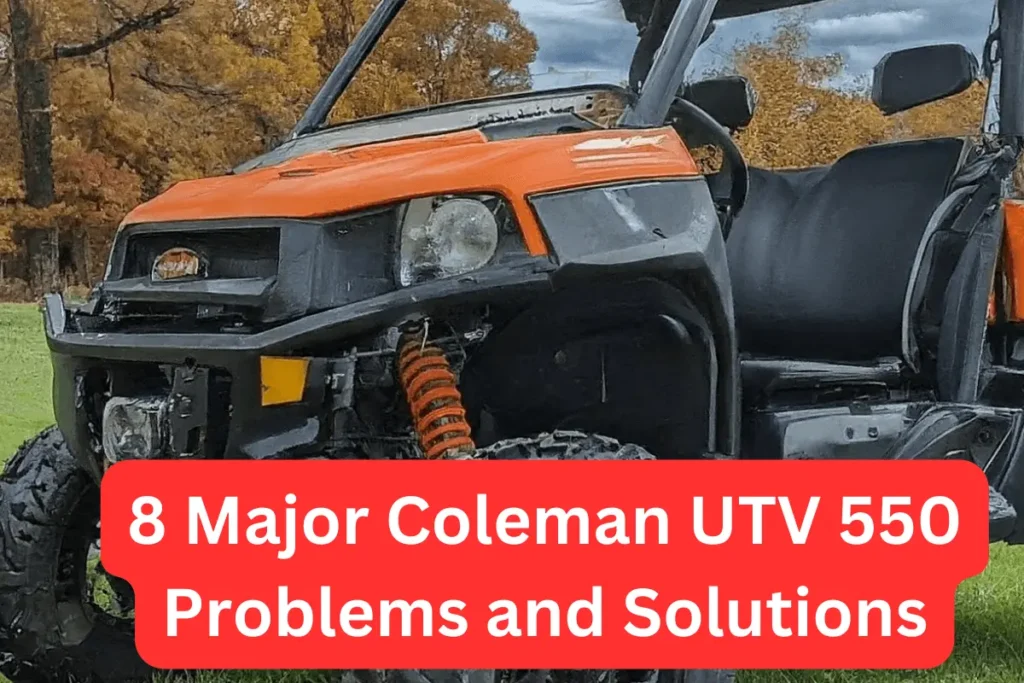The most common John Deere Gator 825i problems are engine, clutch, fuel pump, brake, power steering, starting, power PTO, dust, accelerator, CV joint, and headlight problems.
Here we discuss these issues in detail along with their easy solution. Please stay with us if you’d like to get rid of the problems with your UTV.
John Deere Gator 825i Problems and Solutions
Now we are going to explore these problems in detail and after we will also provide their solutions in a way that a non technical person can also solve it. Also explore the John Deere Gator 620i Problems.
1. Engine Problems
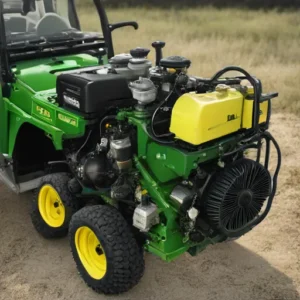
Here are some causes behind the John Deere Gator 825i engine problems.
I. Engine Overheating
One of the most common issues with the John Deere Gator 825i is engine overheating. This can be caused by a variety of factors, such as a malfunctioning cooling system, low coolant levels, or a clogged radiator. If you notice that your engine temperature is rising rapidly or the warning light comes on, follow these steps to address the issue:
- Start by turning off the engine and letting it cool down completely.
- Then, check the coolant levels and add more if needed. Make sure to use the recommended coolant for your Gator 825i.
- Inspect the radiator for any debris or blockages. If you find any, clean it carefully to restore proper airflow.
- Check the radiator fan to ensure it is functioning correctly. If it’s not functioning, it might need to be replaced.
- If the problem persists, it is advisable to consult a certified John Deere technician for further diagnosis and repair.
II. Starting Issues
Another common problem that Gator 825i owners face is difficulty starting the engine. This can be frustrating, especially when you’re in a hurry or need to get work done. Here are steps you can take to troubleshoot and fix starting problems:
- Check the battery connections to ensure they are clean and tight. Loose or corroded connections can stop the engine from starting.
- Inspect the battery for any signs of damage or wear. If it’s old or not holding a charge, it might need replacing.
- Make sure the fuel tank has enough fuel for the engine to start. Sometimes, the engine may not start if the fuel level is too low.
- Ensure that the ignition switch is in the ON position and that the parking brake is engaged.
- If the engine still doesn’t start, it is recommended to contact a qualified technician who can diagnose and fix the issue.
III. Loss of Power
If you experience a sudden loss of power while operating your Gator 825i, there could be a few potential causes. Here are steps you can take to solve this issue:
- Check the air filter for any dirt or debris. A clogged air filter can restrict airflow and result in a loss of power. Clean or replace the air filter as necessary.
- Inspect the fuel filter for any clogs or blockages. A dirty fuel filter can restrict fuel flow and cause power loss. Replace the fuel filter if needed.
- Examine the spark plugs for signs of wear or fouling.
- Engine performance can be affected by worn or dirty spark plugs. Replace the spark plugs if necessary.
- Ensure that the throttle and choke are properly adjusted. Improper adjustments can lead to power loss. Consult your Gator 825i’s manual for guidance on adjusting these components.
- If the issue persists, it is advisable to seek professional assistance from a John Deere service center.
By following these troubleshooting steps, you can address common engine problems with your John Deere Gator 825i and get back to enjoying your off-road adventures.
Also explore the Best Inexpensive off-road vehicles
2. Clutch Problems
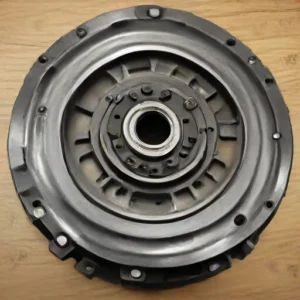
Before we dive into the solutions, it’s important to be able to identify John Deere Gator 825i clutch problems. Here are some common signs that indicate your Gator’s clutch may be experiencing issues:
- Difficulty shifting gears
- Slipping or jerking when accelerating
- Strange noises coming from the clutch area
- Burning smell
- Loss of power
If you notice any of these symptoms, it’s likely that your clutch needs attention. Now, let’s explore some possible solutions.
I. Check Clutch Adjustment
One of the first things you can do is check the clutch adjustment. Over time, the clutch cable may become loose or stretched, causing improper engagement. To adjust the clutch, follow these steps:
- Locate the clutch adjustment nut near the clutch pedal.
- Turn the nut clockwise to tighten or counterclockwise to loosen.
- Test the clutch engagement by shifting gears and observing any improvements.
If adjusting the clutch doesn’t resolve the issue, there may be other underlying problems.
II. Inspect Clutch Components
The clutch system consists of several components, including the clutch disc, pressure plate, and release bearing. It’s crucial to inspect these parts for any signs of wear or damage. Here’s how:
- Engage the parking brake and turn off the engine.
- Remove the clutch cover using a wrench or socket set.
- Inspect the clutch disc for excessive wear or warping.
- Check the pressure plate for cracks or signs of overheating.
- Examine the release bearing for wear or noise.
If you notice any issues with these components, it’s best to consult a professional for further diagnosis and repair.
III. Consider Clutch Replacement
If the clutch components are severely worn or damaged, it may be necessary to replace the entire clutch assembly. While this can be a more involved process, it ensures that your Gator’s clutch will function optimally. It’s recommended to seek assistance from an authorized John Deere service center or a qualified mechanic for clutch replacement.
IV. Regular Maintenance
Prevention is always better than cure. To avoid future clutch problems, it’s essential to perform regular maintenance on your John Deere Gator 825i. Here are some maintenance tips:
- Check and adjust the clutch cable periodically.
- Keep the clutch area clean and clear of debris.
- Follow the manufacturer’s guidelines for clutch fluid replacement.
- Inspect the clutch system during routine service intervals.
By following these maintenance practices, you can extend the lifespan of your Gator’s clutch and minimize the risk of future problems.
3. Fuel Pump Problems
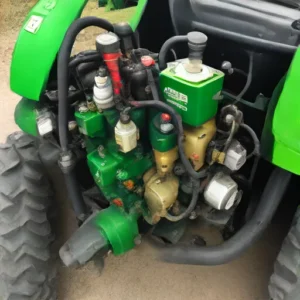
Before we dive into the solutions, let’s first understand the common John Deere Gator 825i fuel pump problems. Fuel pump issues can show up in different ways, such as:
- Engine stalling or not starting
- Loss of power or poor acceleration
- Inconsistent fuel delivery
- Excessive noise coming from the fuel pump
If you’re experiencing any of these symptoms, it’s likely that your fuel pump is not functioning correctly. Also explore the John Deere Gator 625i problems.
Common Solutions
Now that we’ve identified the problems, let’s explore some common solutions that can help you resolve the fuel pump issues in your John Deere Gator 825i:
I. Check for Fuel Contamination
Fuel contamination can often be the culprit behind fuel pump problems. It’s essential to ensure that your fuel is clean and free from any debris or water. Contaminated fuel can clog the fuel pump and hinder its performance. Consider draining the fuel tank and inspecting it for any signs of contamination. If necessary, replace the fuel filter and refill the tank with clean fuel.
II. Inspect and Clean the Fuel Pump
The fuel pump itself may become dirty or clogged over time, affecting its efficiency. Carefully inspect the fuel pump for any signs of debris or blockages. If you notice any, clean the fuel pump using an appropriate cleaner and a soft brush. Be sure to follow the manufacturer’s instructions and exercise caution while working with flammable substances.
III. Check the Fuel Pump Relay and Wiring
Faulty wiring or a malfunctioning fuel pump relay can also cause fuel pump problems. Check the wiring connections and search for any signs of damage or loose connections.
Additionally, test the fuel pump relay to ensure it’s functioning correctly. If necessary, replace any faulty components to restore proper functionality.
IV. Consider Fuel Pump Replacement
If the above solutions don’t resolve the issue, it may be necessary to replace the fuel pump altogether. Over time, fuel pumps can wear out and lose their ability to deliver fuel effectively. Consult your John Deere dealer or a qualified mechanic to determine if a replacement is necessary. They can guide you through the process and help you select the appropriate fuel pump for your Gator 825i.
4. Brake Issues

Here are some brake problems with your John Deere Gator 825i.
Parking Brake Not Engaging
One of the most common problems with the parking brake on the John Deere Gator 825i is that it may fail to engage. This can be frustrating and potentially dangerous, especially if you are parked on a slope. There are a few possible causes for this problem:
- Worn Brake Pads: Over time, the brake pads can wear down, reducing their effectiveness. Inspect the brake pads for any signs of excessive wear and replace them if necessary.
- Loose or Damaged Brake Cable: Check the brake cable for any signs of damage or looseness. If the cable is damaged, you’ll need to replace it. If it is loose, you may be able to adjust it to ensure proper engagement.
- Brake Caliper Issues: The brake caliper is responsible for applying pressure to the brake pads. If the caliper is damaged or malfunctioning, it may not engage the pads properly. Inspect the caliper for any signs of damage and replace if necessary.
Solution: Adjusting and Maintaining the Parking Brake
To address the issue of the parking brake not engaging, follow these steps:
- Check the brake pads for any signs of wear and replace them if needed.
- Check the brake cable for any signs of damage or looseness. If damaged, replace the cable. If loose, adjust it according to the manufacturer’s instructions.
- Inspect the brake caliper for any signs of damage. If damaged, replace the caliper.
- Regularly maintain the parking brake by lubricating the moving parts and ensuring proper tension in the cable.
By following these steps and regularly maintaining your parking brake, you can ensure that it engages properly when needed.
Parking Brake Not Releasing
Another common issue with the parking brake on the John Deere Gator 825i is that it may fail to release. This can be equally frustrating and may prevent you from moving the vehicle. Here are some possible causes for this problem:
- Stuck Brake Caliper: If the brake caliper is stuck, it may not release the brake pads properly. Inspect the caliper for any signs of sticking or damage and replace if necessary.
- Corroded Brake Cable: Over time, the brake cable can become corroded, causing it to stick and not release the brake. Inspect the cable for any signs of corrosion and replace if necessary.
- Brake Fluid Issues: Low brake fluid levels or contaminated brake fluid can also cause the parking brake to not release. Check the brake fluid level and quality, and top up or replace as needed.
Solution: Resolving the Parking Brake Release Issue
To address the problem of the parking brake not releasing, follow these steps:
- Inspect the brake caliper for any signs of sticking or damage. Replace if necessary.
- Check the brake cable for any signs of corrosion. Replace if necessary.
- Check the brake fluid level and quality. Top up or replace as needed.
- If the above steps do not resolve the issue, it is recommended to consult a qualified technician for further diagnosis and repair.
By following these steps and addressing the possible causes, you should be able to resolve the issue of the parking brake not releasing.
5. Power Steering Problems

Here are some John Deere Gator 825i power steering problems .
Problem 1: Loss of Power Steering Assist
One of the most common problems Gator owners face is a sudden loss of power steering assist. This can make steering the vehicle difficult and put a strain on your arms. The loss of power steering assist can occur due to various reasons, such as a malfunctioning power steering pump or a leak in the power steering system.
Solution: If you notice a loss of power steering assist in your Gator 825i, the first step is to check the power steering fluid level. Low fluid levels can cause a decrease in power steering assist. If the fluid level is low, fill it up to the recommended level.
However, if the fluid level is normal, it is advisable to have a professional technician inspect the power steering system for any leaks or pump issues.
Problem 2: Noisy Power Steering System
Another common issue reported by Gator owners is a noisy power steering system. You may hear strange noises, such as whining or squealing, when turning the steering wheel. These noises can be quite bothersome and indicate underlying problems with the power steering system.
Solution: The first step in resolving a noisy power steering system is to check the power steering fluid level. Low fluid levels can cause increased friction and result in noise. If the fluid level is low, add more until it reaches the recommended level.
However, if the fluid level is normal, the issue may be due to a worn-out power steering belt or a faulty power steering pump. In such cases, it is best to consult a professional technician who can diagnose and repair the problem.
Problem 3: Stiff Steering Wheel
Many Gator owners have mentioned having a stiff steering wheel, which can make it challenging to steer the vehicle. This can be frustrating, especially when navigating through rough terrains or tight spaces.
Solution: If you are facing a stiff steering wheel issue, start by inspecting the power steering fluid level. Low fluid levels can cause increased resistance and stiffness in the steering. If the fluid level is low, add more fluid until it reaches the recommended level.
However, if the fluid level is normal, the problem may lie in the power steering pump, steering gear, or tie rod ends. It is recommended to have a professional technician inspect and diagnose the issue for proper resolution.
6. Starting Problems
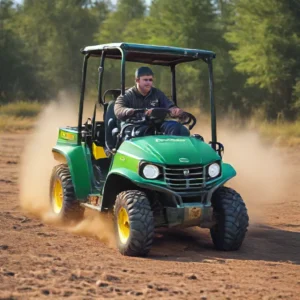
Here are some John Deere Gator 825i starter problems with their easy solutions.
I. Battery Issues
One of the most common reasons for starting problems in the John Deere Gator 825i is a faulty or discharged battery. If your Gator is not starting or experiencing slow cranking, it is worth checking the battery first.
Solution:
Start by inspecting the battery terminals for any corrosion or loose connections. Use a wire brush to clean the terminals and tighten any connections that are loose. If the battery is discharged, you can try jump-starting the Gator using another vehicle or a portable jump starter. If the battery is old or no longer holding a charge, it may need to be replaced.
II. Fuel System Issues
Another common cause of starting problems in the John Deere Gator 825i is related to the fuel system. Issues with the fuel pump or clogged fuel filters can prevent the engine from starting or cause it to run poorly.
Solution:
Check the fuel level in the tank and ensure that it is sufficient. If the fuel level is low, add fresh fuel and try starting the Gator again. If the fuel filters are clogged, they will need to be replaced.
Additionally, you can check the fuel pump for any signs of damage or malfunction. If necessary, consult a professional technician for further diagnosis and repair.
3. Ignition System Issues
The ignition system plays a crucial role in starting the John Deere Gator 825i. Faulty spark plugs or a malfunctioning ignition coil can cause starting problems and affect the overall performance of the engine.
Solution:
Check the spark plugs for any signs of wear or damage. If necessary, replace them with new ones according to the manufacturer’s specifications. Also, examine the ignition coil for any indications of damage or corrosion. If it’s defective, you’ll need to replace it. It is recommended to consult a professional technician for proper diagnosis and replacement of ignition system components.
7. Power PTO Problems
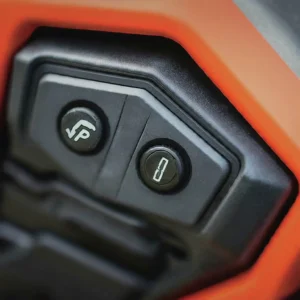
Before we can delve into the solutions, let’s first understand what power PTO problems are. The power PTO, or power take-off, is a mechanism that transfers power from the engine to operate various attachments, such as mowers, snow blowers, or sprayers. If you’re experiencing power PTO problems, you may notice issues such as:
- The PTO not engaging or disengaging properly
- No power output to the attachments
- Strange noises or vibrations when the PTO is engaged
- Intermittent power loss
Troubleshooting Power PTO Problems
Now that we know what to look out for, let’s explore some common problems and their solutions:
1. Inspecting the PTO Clutch
The PTO clutch is a crucial component responsible for engaging and disengaging the power PTO. Start by inspecting the clutch for any signs of wear or damage. Look out for worn-out friction discs, broken springs, or loose connections. If you notice any issues, it’s best to replace the clutch assembly.
2. Checking the PTO Belt
The PTO belt transfers power from the engine to the PTO clutch. Over time, the belt can become worn or stretched, resulting in power loss or slipping. Inspect the belt for any signs of damage, such as cracks or fraying. If necessary, replace the belt and ensure it is properly tensioned according to the manufacturer’s specifications.
3. Verifying the PTO Switch and Wiring
The PTO switch is the control that allows you to engage or disengage the power PTO. Check the switch for any signs of damage or malfunction. Additionally, inspect the wiring connections for any loose or corroded terminals. Clean or replace the switch and wiring as needed to ensure proper electrical flow.
4. Examining the PTO Shaft and Driveline
The PTO shaft and driveline are responsible for transferring power from the PTO clutch to the attachments. Inspect the shaft for any bends, cracks, or excessive play. Check the universal joints and splines for wear or damage. Lubricate the shaft and driveline components according to the manufacturer’s recommendations to ensure smooth operation.
5. Checking the Hydraulic System
If your John Deere Gator 825i is equipped with a hydraulic power PTO, it’s essential to check the hydraulic system. Inspect the hydraulic lines, fittings, and connections for leaks or damage. Ensure the hydraulic fluid is at the correct level and replace it if necessary. If you’re unsure about the hydraulic system, consult the equipment’s manual or contact a qualified technician.
8. Dust Problems
As an owner of a John Deere 825i Gator, you might have encountered issues with dust infiltration. This problem is widespread when driving on unpaved roads or during dry conditions.
Dust can clog the air filter, reduce engine performance, and even impact the longevity of your Gator. Understanding the root cause and potential solutions is essential for maintaining your vehicle’s efficiency.
Solutions
There are several effective ways to mitigate dust problems in the John Deere 825i Gator:
- Regular Air Filter Maintenance: Regularly checking and cleaning the air filter can prevent dust from clogging. John Deere recommends frequently inspecting the air filter every 50 hours or more in dusty conditions.
- Installing Dust Guards: Adding dust guards to the air intake system can help reduce the amount of dust entering the engine. These guards act as a pre-filter, capturing larger dust particles before they reach the primary air filter.
- Using High-Quality Air Filters: Upgrading to a high-quality air filter for dusty environments can enhance dust filtration. OEM and aftermarket options are available that offer better performance than standard filters.
9. Accelerator Problems
One of the most common issues with the John Deere Gator 825i is the accelerator pedal needing to respond or be too stiff.
This can be due to various reasons, including a faulty throttle position sensor (TPS), a clogged fuel injector, or even problems with the wiring harness.
Another frequent problem is the Gator going into limp mode, which limits its speed and performance.
Diagnosing the Problem
The first step in fixing any accelerator issue is diagnosing the problem correctly. Start by checking the throttle position sensor. A faulty TPS can cause erratic acceleration or even no response at all. Use a multimeter to check the sensor’s voltage and ensure it meets the manufacturer’s specifications.
If the TPS works fine, inspect the fuel injectors for clogs or debris. Clean or replace them if necessary. Finally, check the wiring harness for any broken or damaged wires affecting the accelerator’s performance.
Effective Solutions
Once the problem is diagnosed, you can proceed with the appropriate solution. If the issue is with the TPS, replacing it is the best course of action. Ensure you use a genuine John Deere part for reliability.
Cleaning clogged fuel injectors with a fuel injector cleaner can solve the problem. In cases where wiring is the culprit, repairing or replacing the damaged wires should restore normal accelerator function.
10. CV Joint Problems
CV joints are crucial components that help operate smoothly your Gator’s smooth operation. Some common signs that your CV joints may be failing include:
- Clicking Noises: A frequent symptom is a clicking noise when turning, especially at sharp angles.
- Vibration While Driving: If you experience unusual vibrations, it might indicate a worn CV joint.
- Grease Leakage: A visible grease leak around the CV boot can also signal trouble.
Solutions
Addressing CV joint issues promptly can prevent further damage. Here are some solutions:
- Regular Inspection: Periodically check your CV boots for cracks or damage. This can help detect potential issues early.
- Grease Replacement: Ensure that the CV joints are adequately lubricated. If you notice any grease leakage, it might be time to replace it.
- Professional Repair: If you notice any of the symptoms mentioned, it’s best to consult an experienced mechanic. Replacing a CV joint can be complex and is best handled by experts.
11. Headlight Problems
Owners of the John Deere Gator 825i often report problems such as dimming, flickering, or complete headlight failure.
These issues can stem from various causes, including faulty bulbs, wiring problems, or issues with the headlight switch. For example, dimming lights might indicate low batteries or poor electrical connections.
Diagnosing the Problem
To diagnose headlight issues:
- Start by checking the simplest components.
- Inspect the headlight bulbs for any signs of damage or burnout. If the bulbs appear fine, move on to examining the wiring.
- Look for loose connections, frayed wires, or corrosion.
A multimeter can help determine if adequate voltage reaches the headlights.
Effective Solutions
Once the problem is identified, you can proceed with the appropriate solution. If the bulbs are burnt out, replacing them with new ones should resolve the issue.
Ensure you use the correct bulb type specified in your vehicle’s manual. For wiring issues, repairing or replacing the faulty wires can restore proper headlight function.
If the headlight switch is defective, it may need to be replaced by a professional mechanic.
12. Throttle Cable Falls Off
Firstly, understanding why the throttle cable falls off can help in preventing the issue. One major reason could be wear and tear over time.
The throttle cable is a mechanical part that undergoes frequent usage, which can cause it to loosen or even detach. Additionally, the alignment of the throttle cable might be improper, leading to it coming off frequently.
Solutions
There are several effective solutions to ensure that the throttle cable stays in place:
Regular Maintenance
Regularly checking and adjusting the throttle cable is crucial. Ensure that it is properly aligned and not overly tight or loose. Lubricating the throttle cable occasionally can also help in maintaining its condition.
Replacement of Worn Out Parts
If the throttle cable is significantly worn out, replacing it is the best option. John Deere recommends using genuine replacement parts to ensure durability and proper fit.
Consulting a Professional
If you’re not confident in diagnosing or fixing the issue yourself, it’s always safe to consult a professional mechanic. They can provide an accurate diagnosis and solution based on their expertise.
Conclusion:
By following the above guideline you can easily get rid from the John Deere Gator 825i problems because here I provide the complete details about.
I hope you again come to this website to know about the problems of other UTV models like Coleman UTV 550 Problems.

